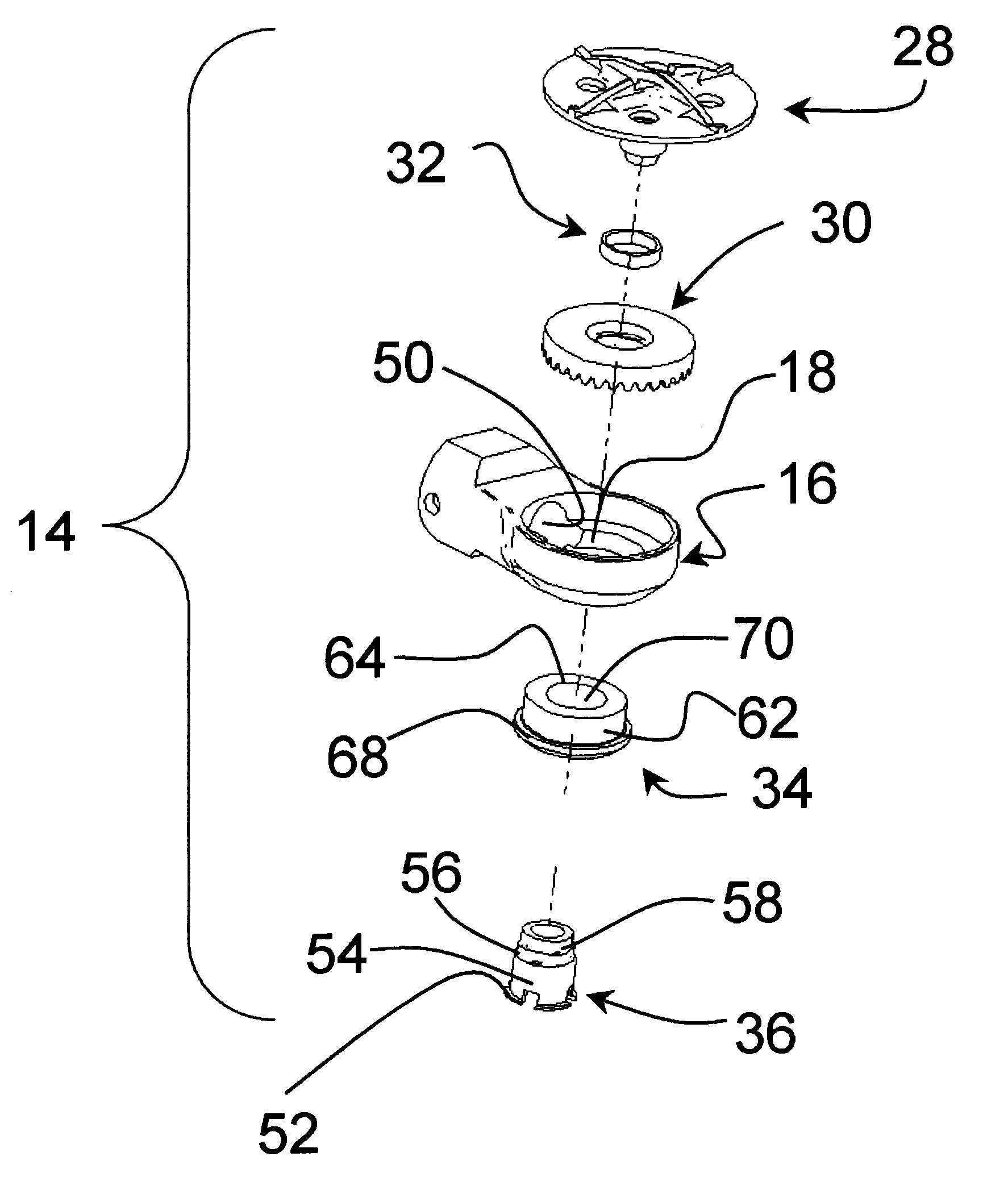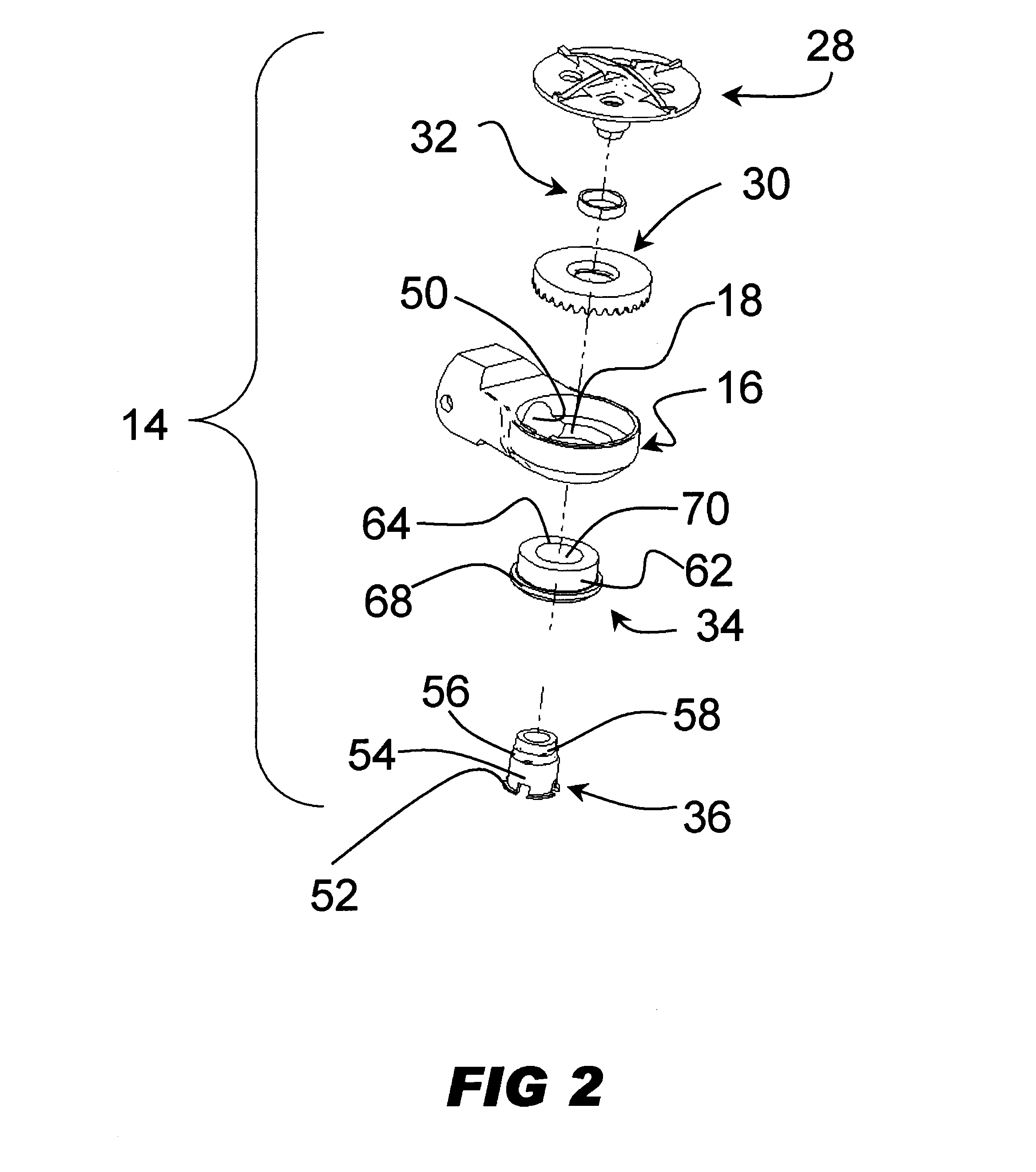Machining apparatus
a technology of machining instruments and machining parts, which is applied in the field of machining instruments, can solve the problems of occupying much needed space in the instrument, affecting the design of such equipment, and reducing the use of machining instruments
- Summary
- Abstract
- Description
- Claims
- Application Information
AI Technical Summary
Problems solved by technology
Method used
Image
Examples
Embodiment Construction
In general, the present invention provides an apparatus for removing material from the surface of tissue, including hard tissue, such as bone. Preferably, the apparatus is used to form a cavity in a bone surface through a machining process.
The apparatus includes a drive mechanism including a gear, a bearing assembly and a gear hub positioned within a housing, and a cavity forming member mounted on the mounting structure. Preferably the cavity forming member is a machining element, and more preferably it is a bone cutting element. The apparatus includes first means for securing the gear, bearing assembly and gear hub together to form the drive mechanism within an opening in the housing, and second means for securing the machining element to the drive mechanism. In accordance with an embodiment of the present invention, the first means includes a first locking member adjacent the gear and a second locking member adjacent the hub. The first and second locking members provide opposing f...
PUM
 Login to View More
Login to View More Abstract
Description
Claims
Application Information
 Login to View More
Login to View More - R&D
- Intellectual Property
- Life Sciences
- Materials
- Tech Scout
- Unparalleled Data Quality
- Higher Quality Content
- 60% Fewer Hallucinations
Browse by: Latest US Patents, China's latest patents, Technical Efficacy Thesaurus, Application Domain, Technology Topic, Popular Technical Reports.
© 2025 PatSnap. All rights reserved.Legal|Privacy policy|Modern Slavery Act Transparency Statement|Sitemap|About US| Contact US: help@patsnap.com



